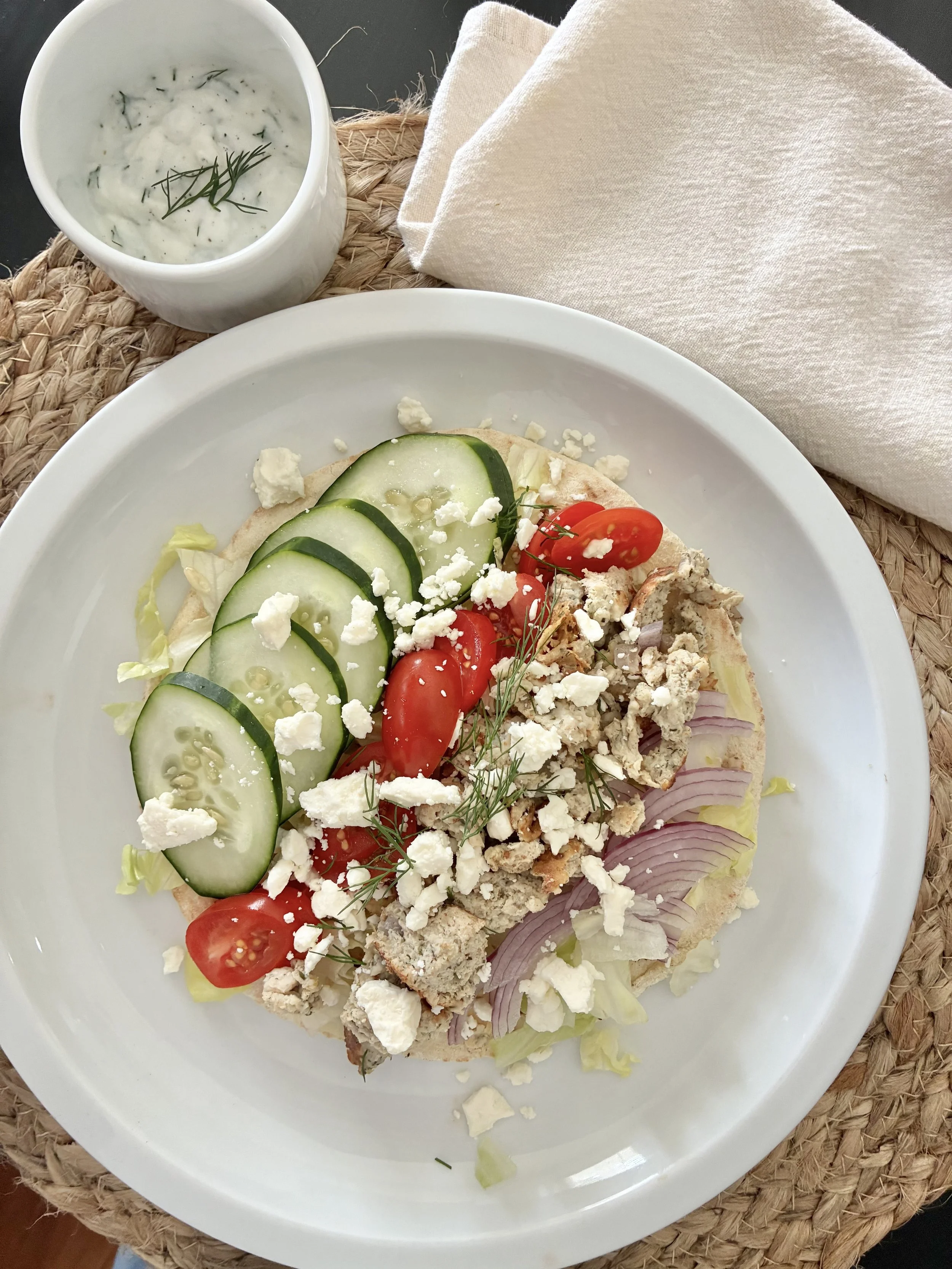The Truth About Protein: What You Need to Know For Fat Loss, Energy and Cravings
/Protein, protein, protein! Is it us or is protein at the forefront of all of the health and wellness website and content creators? With ALL of the information, it’s hard to decipher exactly what’s important and what’s right for you. We’re breaking down protein, why it’s important, how much you really need and where to get it from in this blog post. And hopefully, we’re clearing up some confusion and providing more structure along the way.
Protein is one of the most debated macronutrients in terms of how much humans really need. Whether you are on a weight loss journey, managing hunger, in training for a sport, fueling up for your weekend warrior activities, or just want to work on maintaining your muscle mass, protein is important for your metabolism.
Often times, protein is used predominantly as a way to satisfy hunger, but it actually provides your body with so much more. The human metabolism is designed to allow us to function for longer periods of time without any macronutrients coming into the body. However, the reality is that in the modern world, food is around all of the time. In order to deal with hunger and environmental triggers, while also recovering from sources of increased activity and stress that may be a part of your lifestyle, being mindful of your protein intake is hugely important.
Why is protein so important?
First, It is the most powerful macronutrient for managing hunger and cravings. Water and fiber can help with that as well, but protein is the star of the show when it comes to getting your hunger, energy, and cravings in check. In addition, since protein helps with getting these 3 biofeedback markers in check, you are creating a calorie deficit without even thinking about it. In every study where researchers have taken protein and substituted it calorie for calorie in place of fat or carbohydrate, people tend to lose weight and have less hunger.
How much protein do I need?
There isn’t a one-size-fits-all answer to this question. But consider your personal preference as the guide here. You may love to count your macros and you want a hard number, or you may despise counting and would prefer to just follow some general guidelines. For those of you who want to be a little bit more intuitive, the idea is to include enough protein at every meal to feel balanced in hunger, energy, mood, and cravings. For the hard-numbers types, aim for about .5 - 1 gram per pound of body weight depending on your goals and what your body tolerates (keep in mind any health conditions, energy needs, sport performance and weight loss goals).
What are the best sources of protein?
The best source of protein, as silly as it sounds, is going to be from protein sources that are mostly protein. For example, beans are mostly starch and nuts are mostly fat, although both do have some protein in them. Prioritize lean protein sources and you’ll be golden. Think foods like turkey breast, boneless skinless chicken breast, and egg whites as well as protein powders such as whey, or egg white protein (make sure to purchase protein powder - not meal replacements).
If you are a vegan or vegetarian or you simply choose to avoid dairy, there are plenty of other protein supplements out there like pea protein, hemp protein, or rice protein blends. No matter the source, if you are wondering why a protein supplement may be so helpful, remember that convenience makes incorporating protein super easy.
Learn more about protein sources: Does The Source of Protein In Your Diet Make A Difference?
TAKING ACTION
At Vita Vie Retreat, we’re all about taking action. Understanding the importance of protein is one thing — putting it into practice is where you’ll see results. Here’s how to take action and build a protein strategy that works for you:
Consider your lifestyle and activity level
Active individuals, especially those lifting weights or doing endurance exercise, typically need more protein than someone with a sedentary lifestyle.
Set your intake based on goals
Weight loss: Protein helps manage hunger and preserve lean muscle.
Muscle building: Higher intake supports growth and repair.
Maintenance and healthy aging: Adequate intake supports strength, metabolism, and recovery.
Factor in your body weight
A simple starting point is 0.5–1.0 grams of protein per pound of body weight, adjusting based on your goals and how your body responds.
Choose quality protein sources
Whole foods first: lean meats, poultry, fish, eggs, beans, lentils, dairy, nuts, and seeds.
Use supplements like protein powders to fill in the gaps when you’re busy or on the go.
Spread protein throughout the day
Aim to include protein in every meal and snack to keep energy stable, support recovery, and maximize absorption.
Track, reflect, and adjust
Pay attention to your progress, energy, and recovery. If you’re not seeing or feeling results, adjust your intake up or down and reassess after a few weeks.
CHALLENGE: Choose one meal or snack this week and add an additional 7-14g. Start small. Know your protein requirements and adjust as necessary. Tune into what works - the kind of protein, the meal, how much you’re adding to understand what works (or doesn’t) for you.
Want high protein, low carb recipes? Try our High Protein, Low Carb Recipe Bundle
SAY HELLO TO YOUR HIGH PROTEIN PARTNER
Dive into a high protein, low carb lifestyle to fuel your body, increase energy, and create sustainable body shape change.
Enjoy:
Done-for-you meal plans with grocery lists and meal prep tips
A guided 8 week journey
Snack ideas
Blood sugar management education
Nutrition & wellness guides
Progress tracking tools and more!
Get the High Protein Reset now!






















